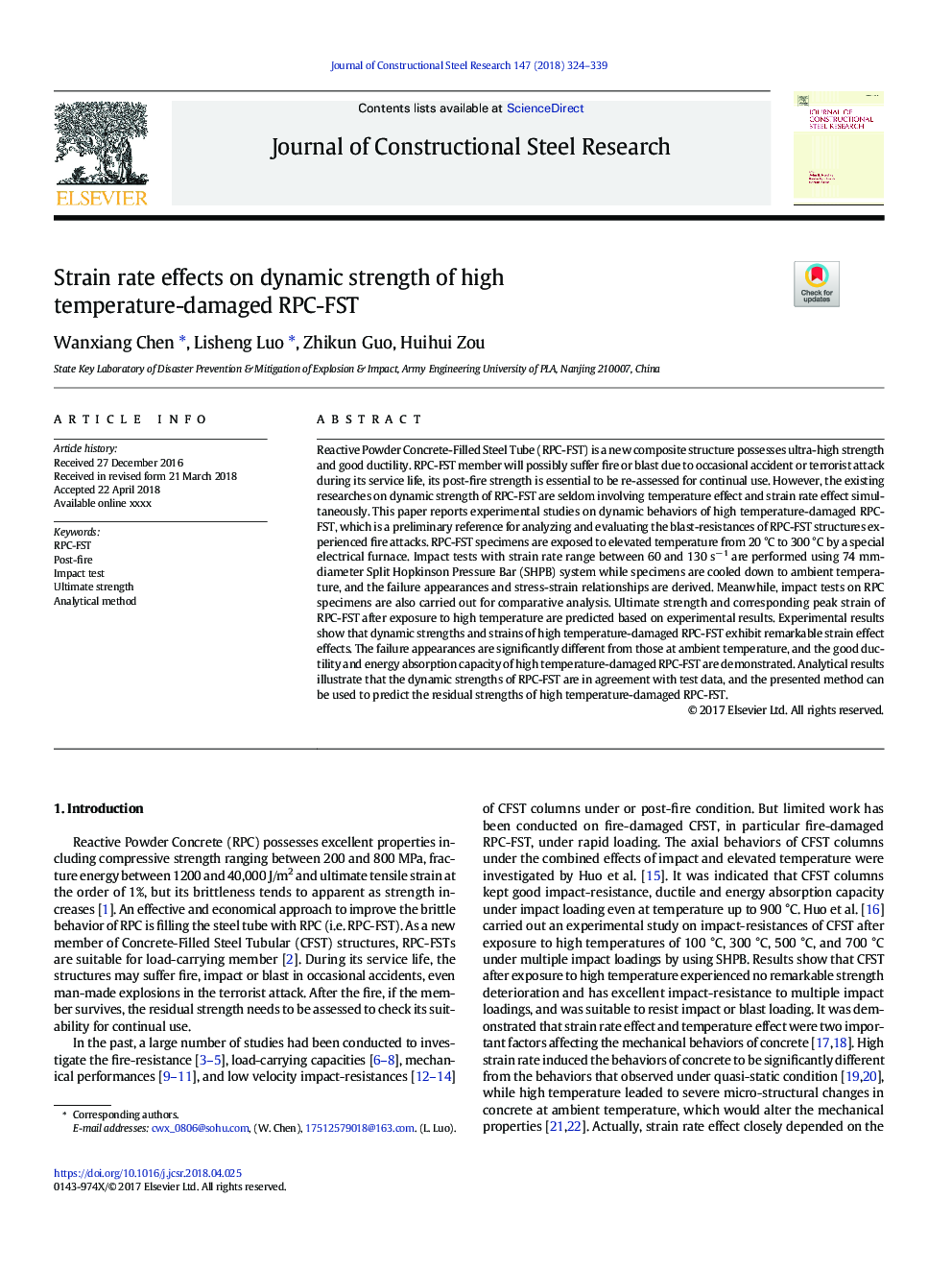| Article ID | Journal | Published Year | Pages | File Type |
|---|---|---|---|---|
| 6750490 | Journal of Constructional Steel Research | 2018 | 16 Pages |
Abstract
Reactive Powder Concrete-Filled Steel Tube (RPC-FST) is a new composite structure possesses ultra-high strength and good ductility. RPC-FST member will possibly suffer fire or blast due to occasional accident or terrorist attack during its service life, its post-fire strength is essential to be re-assessed for continual use. However, the existing researches on dynamic strength of RPC-FST are seldom involving temperature effect and strain rate effect simultaneously. This paper reports experimental studies on dynamic behaviors of high temperature-damaged RPC-FST, which is a preliminary reference for analyzing and evaluating the blast-resistances of RPC-FST structures experienced fire attacks. RPC-FST specimens are exposed to elevated temperature from 20â¯Â°C to 300â¯Â°C by a special electrical furnace. Impact tests with strain rate range between 60 and 130â¯sâ1 are performed using 74â¯mm-diameter Split Hopkinson Pressure Bar (SHPB) system while specimens are cooled down to ambient temperature, and the failure appearances and stress-strain relationships are derived. Meanwhile, impact tests on RPC specimens are also carried out for comparative analysis. Ultimate strength and corresponding peak strain of RPC-FST after exposure to high temperature are predicted based on experimental results. Experimental results show that dynamic strengths and strains of high temperature-damaged RPC-FST exhibit remarkable strain effect effects. The failure appearances are significantly different from those at ambient temperature, and the good ductility and energy absorption capacity of high temperature-damaged RPC-FST are demonstrated. Analytical results illustrate that the dynamic strengths of RPC-FST are in agreement with test data, and the presented method can be used to predict the residual strengths of high temperature-damaged RPC-FST.
Related Topics
Physical Sciences and Engineering
Engineering
Civil and Structural Engineering
Authors
Wanxiang Chen, Lisheng Luo, Zhikun Guo, Huihui Zou,
